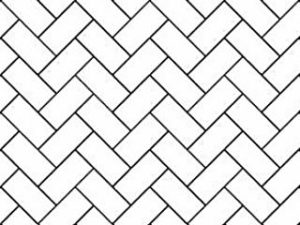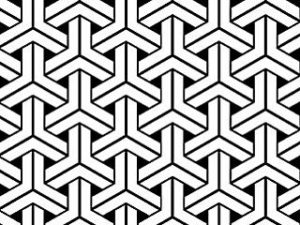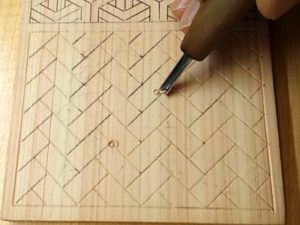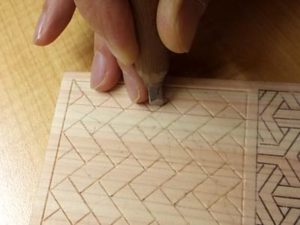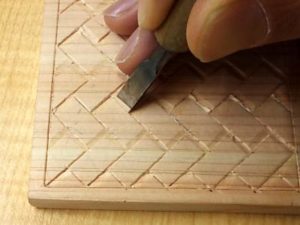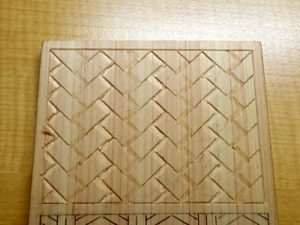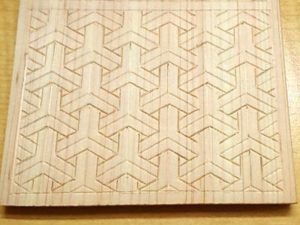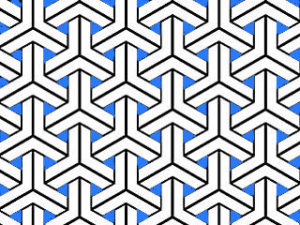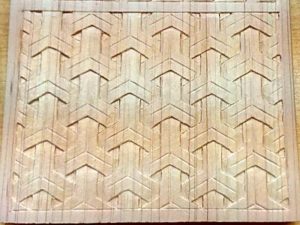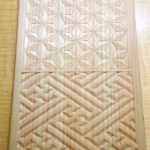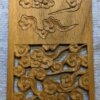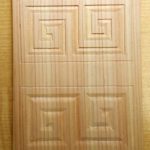How to carve patterns Part 5 ~ Higaki and Kumikikko~
In this lesson, we’ll go over how to carve two interwoven patterns:
-
Higaki (Cypress Fence)
-
Kumikikkō (Braided Tortoiseshell Pattern)
Both patterns feature overlapping or interlaced elements. The key is to carve in a way that suggests depth and layering by carefully shaping corners and adjusting height.
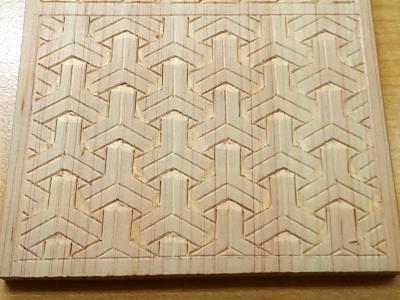
檜垣と組亀甲の木彫り
Preparation
Use carbon paper to trace the Higaki and Kumikikkō designs onto a postcard-sized wooden board.
You can download the sketches here: [PDF of Higaki and Kumikaku].

1.How to carve Higaki
In traditional Japanese architecture, a fence made by layering thin cypress boards in an alternating fashion is called Higaki or Ajiro.
In this carving, we express the interwoven structure without actual weaving—just through careful relief carving.
Step 1: Line Carving
Carve the pattern lines with a triangular chisel, then make incisions along the necessary edges using a sharp chisel.
Step 2: Cutting the Corners
Use a flat chisel to shave off the corners of the parts that go underneath.
This creates a layered effect and makes it look like one strip tucks beneath the other.
Step 3: Smoothing the Underlap
Continue shaping the edges with a sharp chisel and flat chisel, imagining how the strips would weave under each other naturally.
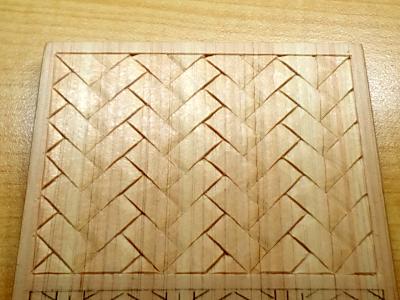
2.How to carve Kumikikko
Kumikikkō is a hexagonal, braided pattern that resembles tortoiseshell and often appears in traditional Japanese crafts and armor design.
Step 1: Line Carving
Begin by carving the main lines with a triangular chisel. Then, use a sharp chisel to make incisions along most of the lines.
Note: In the sketch, the red lines are only for line carving—no incisions are needed on those.
Step 2: Carving the Underlapping Corners
Just like in the Higaki pattern, use a flat chisel to shave the corners of the parts that appear to go underneath.

Then, gradually flatten the shaved corners so they transition smoothly into the surrounding areas.
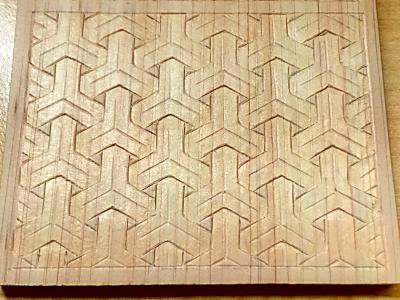
Step 3: Lowering the Inner Triangles
Look at the blue areas in the sketch. These inner triangles should be carved one step lower to give the design dimensionality.
To do this:
-
Make incisions on all three sides of the triangle with a sharp chisel.
-
Use a 1.5mm flat chisel to carve the interior slightly deeper than the rest of the pattern.
Step 4: Finishing Touches
Re-engrave any lines that faded during carving to sharpen the details.
.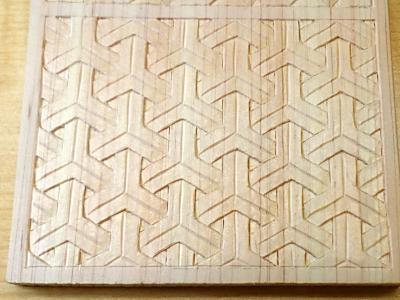
組亀甲の木彫り完成
How to carve patterns
- From the lattice to the scales
- Raimon
- Asanoha and Sayagata
- Seigaiha and Sippo-Tsunagi
- Higaki and Kumikikko ←Current page displayed
- Mimasu-Tsunagi and Mimasu-Chirashi
- Ryusui
- Bundo-Tsunagi and Tatewaku
- Yamajimon and Misujidate
- Kemanmon and Gobosei
- Chidori and Chidori-Goshi
- Nejiume (Twisted plum)
- Kikubishi and Yaegiku
- Ichimatsu and Sankuzushi
- Kikko and Yagasuri
- Clouds
- Waves

